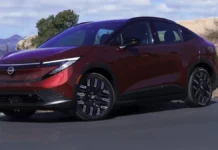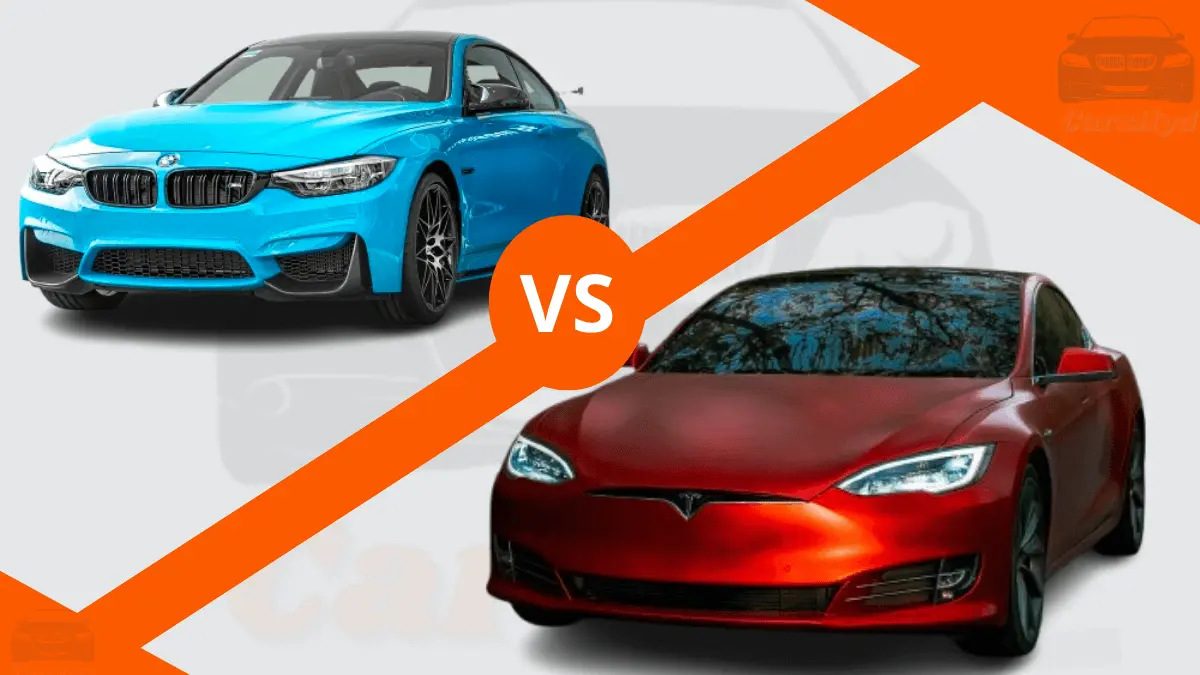When it comes to buying a car, making the right choice is crucial. With so many models, features, and price ranges available, it can be overwhelming to choose the perfect vehicle that meets your needs and budget. That’s where comparing cars comes in. Compare cars not only helps you evaluate the different options but also ensures that you get the best value for your money. Whether you’re looking for fuel efficiency, safety, performance, or style, understanding the pros and cons of various vehicles is key to making an informed decision.
In this guide, we’ll walk you through the essential factors to consider when comparing cars and provide insights into the tools and resources that can make the process easier. By the end of this article, you’ll have a clear understanding of how to compare cars effectively, ensuring you choose the right vehicle for your lifestyle and preferences.
Why Comparing Cars is Important
Before making any major purchase, it’s always a good idea to compare different options to ensure you’re getting the best deal. This holds true when buying a car, as the right vehicle can impact your daily commute, comfort, safety, and long-term expenses. Here’s why comparing cars is a critical step in your buying journey.
First, comparing cars helps you narrow down the vast range of options to the ones that best meet your specific needs. Whether you’re looking for a family-friendly SUV or a fuel-efficient sedan, comparing features like engine performance, fuel economy, and available technology ensures that you’re choosing a car that aligns with your lifestyle.
Second, comparing cars allows you to assess the total cost of ownership. Beyond the purchase price, you’ll need to consider factors like insurance rates, maintenance costs, and fuel efficiency. A car that seems like a good deal upfront may turn out to be more expensive in the long run.
Finally, comparing cars lets you evaluate their safety features. Many cars come equipped with different safety technologies like lane-departure warning, automatic emergency braking, and blind-spot monitoring. Understanding these features can make a huge difference when it comes to protecting you and your loved ones on the road.
Key Criteria for Comparing Cars
When it comes to comparing cars, several key factors should be at the forefront of your decision-making process. These elements can help you find the vehicle that not only suits your preferences but also meets your practical needs.
Performance
Performance is arguably one of the most important aspects to consider. Start by looking at the engine specifications, horsepower, and torque ratings. These factors determine how a car accelerates, handles, and performs on various terrains. If you plan to drive on highways or mountain roads frequently, you may want a vehicle with more power. For city driving, a smaller, fuel-efficient engine may suffice.
Price and Value for Money
The initial price of a car is an obvious factor, but you should also consider its long-term value. Does the car offer good resale value? How does the cost of ownership stack up compared to similar models? Factors like fuel efficiency, repair costs, and warranty coverage play a huge role in determining whether a car is worth the investment.
Safety
Safety is non-negotiable. Look at the car’s crash-test ratings, safety features like airbags and stability control, and any driver-assistance technologies such as adaptive cruise control or collision avoidance systems. A car with higher safety ratings can provide peace of mind for both you and your family.
Comfort and Interior Features
Comfort is a key part of the driving experience, especially if you spend a lot of time behind the wheel. Compare the interior layout, seating quality, and available features such as air conditioning, infotainment systems, and leather upholstery. A car’s ride quality, how smooth and quiet it is can also make a significant difference.
Fuel Efficiency
Fuel economy is a critical factor, especially with rising fuel prices. Compare the miles per gallon (MPG) ratings for city and highway driving to determine which car offers the best efficiency. Hybrid and electric cars, in particular, can offer significant savings on fuel costs over time.
Comparing Popular Models
Now that we’ve covered the key factors to consider when comparing cars, let’s take a look at three popular models in different categories to see how they stack up against each other. For this comparison, we’ll evaluate the Tesla Model 3, BMW Series 3, and Honda CR-V, focusing on performance, price, safety, comfort, and fuel efficiency.
Tesla Model 3

- Performance: With its electric powertrain, the Tesla Model 3 offers instant torque, meaning impressive acceleration and smooth driving dynamics. It comes in three variants: Standard Range Plus, Long Range, and Performance, each with varying levels of horsepower and range.
- Price: Starting at around $40,000, the Tesla Model 3 is priced competitively for an electric vehicle of its class, especially considering its range and technology.
- Safety: Tesla vehicles are known for their superior safety features, and the Model 3 is no exception. It comes with advanced driver-assistance systems, including autopilot capabilities, collision avoidance, and automatic emergency braking.
- Comfort: The interior features minimalist design, large touchscreens, and spacious seating for up to five passengers. The ride is smooth, and the cabin remains quiet even at higher speeds.
- Fuel Efficiency: The Model 3’s all-electric powertrain offers impressive range, with up to 353 miles on a single charge for the Long Range model.
BMW Series 3

- Performance: The BMW Series 3 is a sports sedan that offers an engaging driving experience with powerful engine options ranging from the 2.0-liter turbocharged four-cylinder to the 3.0-liter turbocharged six-cylinder.
- Price: The starting price for the BMW Series 3 is around $42,000, making it a premium option in the luxury sedan category.
- Safety: The Series 3 is equipped with BMW’s suite of safety features, including lane-keeping assist, adaptive cruise control, and automatic emergency braking.
- Comfort: Known for its premium interior, the BMW Series 3 features high-quality materials, excellent ride quality, and a range of customization options.
- Fuel Efficiency: Fuel economy varies between models, but the four-cylinder versions of the Series 3 can achieve up to 26 MPG in the city and 36 MPG on the highway.
Honda CR-V

- Performance: The Honda CR-V is a compact SUV that offers a comfortable ride and decent power from its 1.5-liter turbocharged engine.
- Price: Starting at about $28,000, the Honda CR-V is a more affordable option compared to the Tesla and BMW models.
- Safety: Honda includes its Honda Sensing suite of safety features, which includes forward collision warning, lane departure warning, and adaptive cruise control.
- Comfort: The CR-V provides ample space for both passengers and cargo. The cabin is well-equipped with user-friendly technology, and the seats are comfortable for long drives.
- Fuel Efficiency: The CR-V is known for its excellent fuel efficiency, achieving up to 28 MPG in the city and 34 MPG on the highway.
Tools for Comparing Cars
When comparing cars, it’s helpful to use online resources and tools that streamline the process. Here are a few popular car comparison tools:
- Kelley Blue Book (KBB): KBB provides a car comparison tool where you can compare up to four vehicles side by side. It includes detailed information on pricing, features, and reviews.
- Edmunds: Edmunds offers a comprehensive car comparison tool that lets you compare new and used cars based on a variety of factors like pricing, features, and expert reviews.
- Autotrader: Autotrader’s comparison tool allows you to compare vehicles by year, make, model, and more. It also gives access to a vast database of listings to help you make your decision.
These tools can save you time and provide valuable insights into the cars you’re considering, ensuring you’re making the best possible choice.
The Pros and Cons of Comparing Cars
While comparing cars is an essential step in the buying process, it’s important to weigh the pros and cons.
Pros:
- Informed Decision: Comparing multiple models helps you make an informed decision based on your needs and budget.
- Better Deals: With a solid comparison, you’re less likely to be swayed by high-pressure sales tactics and can negotiate a better deal.
- Avoid Buyer’s Remorse: When you know you’ve made the best choice, you’ll feel more confident and satisfied with your purchase.
Cons:
- Overwhelming Options: The sheer number of vehicles available can be overwhelming, and spending too much time comparing might lead to decision paralysis.
- Time-Consuming: While researching and comparing is important, it can take up a lot of time, especially if you’re considering multiple cars.
Conclusion
In conclusion, comparing cars is an essential step in the car-buying process. By evaluating key factors like performance, price, safety, and fuel efficiency, you can ensure that you’re choosing the right vehicle for your needs. Whether you’re considering a luxury sedan like the BMW Series 3, a reliable SUV like the Honda CR-V, or an eco-friendly electric vehicle like the Tesla Model 3, the comparison process will help you make an informed and confident decision.
Don’t rush into your car purchase, take the time to compare, test drive, and evaluate all your options. By doing so, you’ll be on your way to finding the perfect car for your lifestyle.
FAQs: Compare Cars – Ultimate Guide for Choosing the Right Vehicle
1. Why is it important to compare cars before buying?
Comparing cars before purchasing allows you to evaluate multiple options based on essential criteria like price, performance, safety, fuel efficiency, and comfort. This ensures you choose a car that best fits your needs, budget, and lifestyle.
2. What are the main factors to consider when comparing cars?
When comparing cars, key factors to consider include performance (engine power, acceleration), price, safety features, comfort (interior space, ride quality), fuel efficiency, and additional features like tech and infotainment systems.
3. How can I compare different car models effectively?
You can compare different car models by using online comparison tools like Kelley Blue Book, Edmunds, or Autotrader, which allow you to see side-by-side data on price, features, and reviews. Additionally, test-driving the cars and reviewing expert and user reviews can help in your decision-making process.
4. What are the best online tools for comparing cars?
Popular online tools for comparing cars include:
- Kelley Blue Book (KBB): Offers detailed comparisons on pricing, value, and features.
- Edmunds: Provides in-depth reviews and comparisons for new and used cars.
- Autotrader: Allows you to compare various car models by filtering key features and specs.
5. Is it better to compare new cars or used cars?
It depends on your needs. Comparing new cars offers the latest features, warranties, and technology, while comparing used cars can provide more affordable options and greater value. If you’re on a budget, buying a used car may be a more economical choice, but if you prioritize modern technology and warranties, a new car may be a better fit.
6. Can comparing cars save me money?
Yes, comparing cars can save you money by helping you find the best deal in terms of price, financing options, and the long-term cost of ownership. By comparing factors like fuel efficiency and maintenance costs, you can choose a vehicle that offers the best value over time.
7. What should I do if I’m having trouble deciding between two cars?
If you’re struggling to decide between two cars, it’s helpful to revisit the criteria that matter most to you (e.g., safety, performance, price). Take both cars for test drives, consult user reviews, and evaluate their total cost of ownership to make a well-informed decision.
8. How can I compare cars from different categories (e.g., sedan vs SUV)?
Comparing cars from different categories, like a sedan vs an SUV, requires focusing on the key features that matter most in each category. For instance, consider the SUV’s cargo space and off-road capability versus the sedan’s fuel efficiency and handling. Online tools often let you compare vehicles across categories, helping you decide which style best suits your needs.
9. What are the benefits of compare cars before making a purchase?
Comparing cars helps you make a more informed choice, ensuring you select a vehicle that offers the best balance of features, value, and cost. It also provides insight into the long-term costs, including maintenance and insurance, and helps you avoid buyer’s remorse.
10. How do I know if I’ve found the right car after comparing?
Once you’ve compared all the options based on your personal needs and preferences, take the time to test drive your top choices. Pay attention to comfort, handling, visibility, and noise levels. If it feels right and aligns with your budget and requirements, you’re likely on the right track.



















